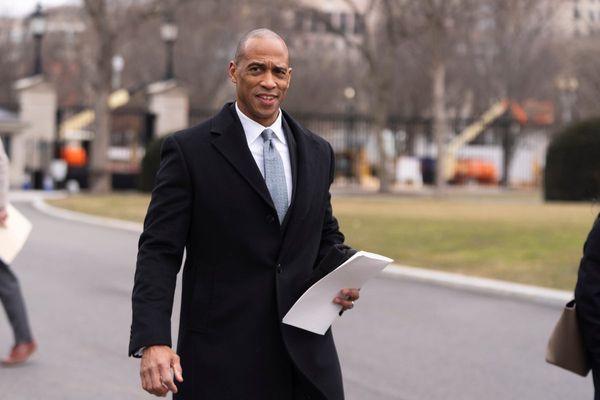
The earthquake that struck the Tokyo region two minutes before noon on 1 September 1923 was so powerful that it destroyed the central weather bureau’s seismometers.
Over almost two days, fires triggered by household gas burners, chemicals and overhead wires raged through the wooden buildings of eastern Tokyo’s low-lying shitamachi neighbourhoods.
By the time the blazes had been extinguished or burned themselves out, an estimated 105,000 people were dead or missing, and most of the city’s buildings had been destroyed, including 290,000 homes. The damage was estimated at ¥5.5bn, equivalent to 37% of Japan’s gross domestic product at the time.
As the Japanese capital marks the 100th anniversary on Friday of what became known as the Great Kantō Earthquake, its residents are bracing themselves for another “big one”.

Seismologists believe there is a 70% chance of a massive earthquake hitting the Tokyo metropolitan area within the next 30 years, killing up to 23,000 people and causing direct damage reaching ¥47tn (£254bn).
Widespread disruption to manufacturing and services caused by damage to transport networks and power cuts could reach an additional ¥48tn, along with price rises and a plummeting yen, according to Japan’s Cabinet Office. About 4.53 million people would be unable to return home in the aftermath of the quake, according to an estimate published last year by the Tokyo metropolitan government.
The Tokyo of today bears little resemblance to the city levelled by the 7.9-magnitude offshore quake a century ago. Evidence of the destruction is preserved at a memorial museum in eastern Tokyo: piles of nails welded into a grotesque sculpture by the heat from the fires, charred printing machines, buckled bicycles and black-and-white photos of crowds of dazed residents seeking an exit from the mayhem.
The human toll in that disaster came not only from the collapsed, burned buildings. Mobs armed with swords and iron bars – and encouraged by police – murdered a large number of Korean residents after baseless rumours that they were exploiting the chaos to loot and poison wells.
The 1923 disaster provided valuable lessons for a country that sits on the Pacific’s seismically hyperactive “ring of fire” and accounts for fifth of the world’s most powerful earthquakes.

The Kantō disaster marked “the dawn of seismic design of structures in Japan”, according to Yoshiaki Nakano, an earthquake engineering expert from the National Research Institute for Earth Science and Disaster Resilience.
New building codes to make structures more resistant to seismic activity were introduced a year later and have been adapted in the decades since to reflect the technological advances made after other powerful earthquakes in Japan, including the 2011 triple disaster in which more than 18,000 people died, and the Kobe earthquake in January 1995 that killed 6,000.
While other countries such as Turkey and Syria are given horrific reminders of the vulnerability of their buildings, Japan has some of the most stringent safety regimes in the world, demonstrated by the terrifying sight, on 11 March 2011, of skyscrapers swaying but remaining upright in a 9-magnitude quake.
The ever-present threat of earthquakes and tsunami forms part of the Japanese psyche, from the schoolchildren who know instinctively to pull on their protective zukin hoods and take shelter beneath their desks, to the stockpiling by Tokyo authorities of millions of instant meals.
Few people in Japan will not have been startled by a smartphone alert warning them of an impending quake, theoretically giving them just enough time to take cover – the occasional false alarm notwithstanding.
On Friday, self-defence force personnel, members of the emergency services, politicians and public officials will take part in simulations to remind them of Japan’s vulnerability – and how to survive the worst – on national Disaster Prevention Day, introduced in 1960 to commemorate the 1923 quake.

In his 1983 book Low City, High City, Edward Seidensticker speculated that relocating the capital would have made sense to some policymakers before the 1923 disaster. “Tokyo lies in earthquake country,” he wrote. “Another flattening earthquake was bound to come. It has not come in the more than 60 years since the last one, but the assumption that it will come some day is universal.”
But discussions on moving the capital, or some of its main functions, to Kyoto or Osaka gained little traction, and the breakneck pace of reconstruction appeared to justify the decision to retain Tokyo as imperial Japan’s political and economic centre.
A century on – with the long-predicted seismic shock yet to come – the concentration of power and money in Tokyo has dramatically raised the stakes.
“The Great Kantō quake involved a collision between tectonic plates beneath ocean floor plates,” said Prof Takaaki Kato, an expert on safety and urban planning at Tokyo University’s institute of industrial science. “That type of earthquake occurs every 200 to 300 years.” But, he added, “that doesn’t mean we can relax”.
He said. “In the 100-year period before an offshore earthquake occurs, there will be quakes of at least 7 magnitude whose epicentres are inland, and we can expect several quakes like that in the Tokyo metropolitan area. I can’t say exactly when and where, only that it will happen … and that we should be prepared for it.”







